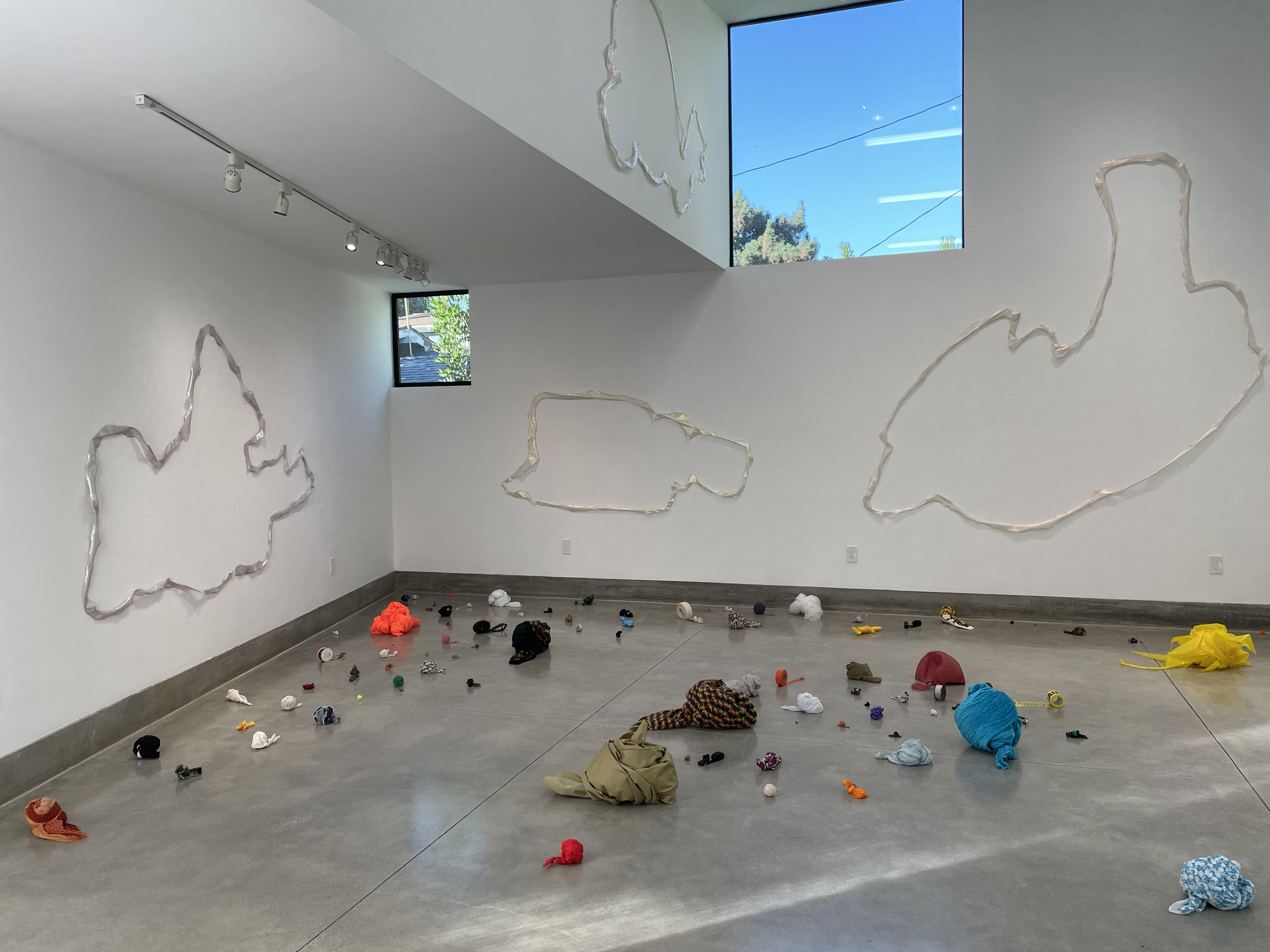David Colosi SNAILEIDOLIA
SNAILEIDOLIA
My first encounter with David Colosi's snail forms: a rolled-up piece of material with one end left open, seemingly twisted and plopped down as a “must see.”
And then there were more. Specimens. What to make of this snail-ish thing? The materials reminded me of what the artist Richard Tuttle would have lying on his studio floor, or a piece of material fallen off an Edward Kienholz work… This was a familiar find-and-share visual exercise, one I’ve come to expect with Dave’s work; a visceral rendezvous. I realized he was going to “go there.” And “there” comes with serious research and writing and making…
Colosi the artist is a very good writer, a writer who askews as a way forward, especially when he finds something new. He likes to do research within the self-agreed-upon narrative that this between state—between snail and no-snail—needs for its moment to shine. SNAILEIDOLIA is precisely the fascination of focusing on an object that may or may not be looking back at me. Pareidolia is the ability to perceive faces in non-sentient forms. And with that, a feeling of “hello” and the uncanny (pareidolia sounds like paranoid for a reason). Speaking of which, I always think the best artists are obsessed. It’s where we lose ourselves within “it,” and re-emerge just enough to tread the line…or in this case, the lines a snail makes. Or! That a snail is a line, albeit gooey. And the house on its back? O! Don’t get Mr. Colosi started! A moving line that is also a home leaving a drawing wherever it goes? He writes: “Most of us use – and abuse – snails, in the food industry, medical science, cosmetics, adhesive research, visual and literary art, film and fashion…. This led to me write a short story about a society that implants snail DNA into humans as a corrective for homelessness.”
And there it is. The project in full swing.
What some of you may not know, is just how deep the spiral dives with David’s use of imagination. He rides it with intelligence, where his archeological tendencies (re-search) are not strategic, but more and more fuel / food for where the imagination could go. He goes “there” and with such admirable determination, he ignores the weight of the “meta” along the way, bypasses “critical-distancing techniques” that would make this project any “smarter.” Why not keep going until one entertains oneself fully?
Let’s also be clear on this particular show presented by Kent Young. You see, Dave’s studio at Cal Arts in 1989 was directly between Kent’s and mine. So it must be told: His studio door had a hole in it, and I peaked in that curiosity box. On one such peaking I witnessed a floor covered with tiny tables, made from tiny tiny pieces of wood, with each holding a tiny piece of lint, or a piece of gum, or cigarette butt….you get the picture…“Brutally delightful!”
To quote the artist again: “But snails have nothing, and everything, to do with the current exhibition. There are no snails present; there is no snail residue. The objects on the floor are knotted pieces of fabric, string, paper, and other debris. From 2018 I photographed these in provocative ways to be shared on my Instagram account. The soft sculptures on the wall are the outlines of a select few of these photographs of knots. These were made as slime pours – water, glue and Borax and tinted with interference colored pigment – dried and hung with pins commonly used for dissections.”
Let me wrap this up (pun intended), by holding in my hand a test from the artist’s slime pours: an iridescent, amorphic line drawing that curls up on itself. Textured. These float on the gallery walls to demarcate the silhouette of “snails/not-snails.” Yes, they remind me of the glistening snail trails on summer suburban sidewalks. It’s as if a cosmic snail drew a self-portrait while we weren’t looking. Could be. This is Mr. Colosi’s world blending into ours.
- Jimmy Raskin


















